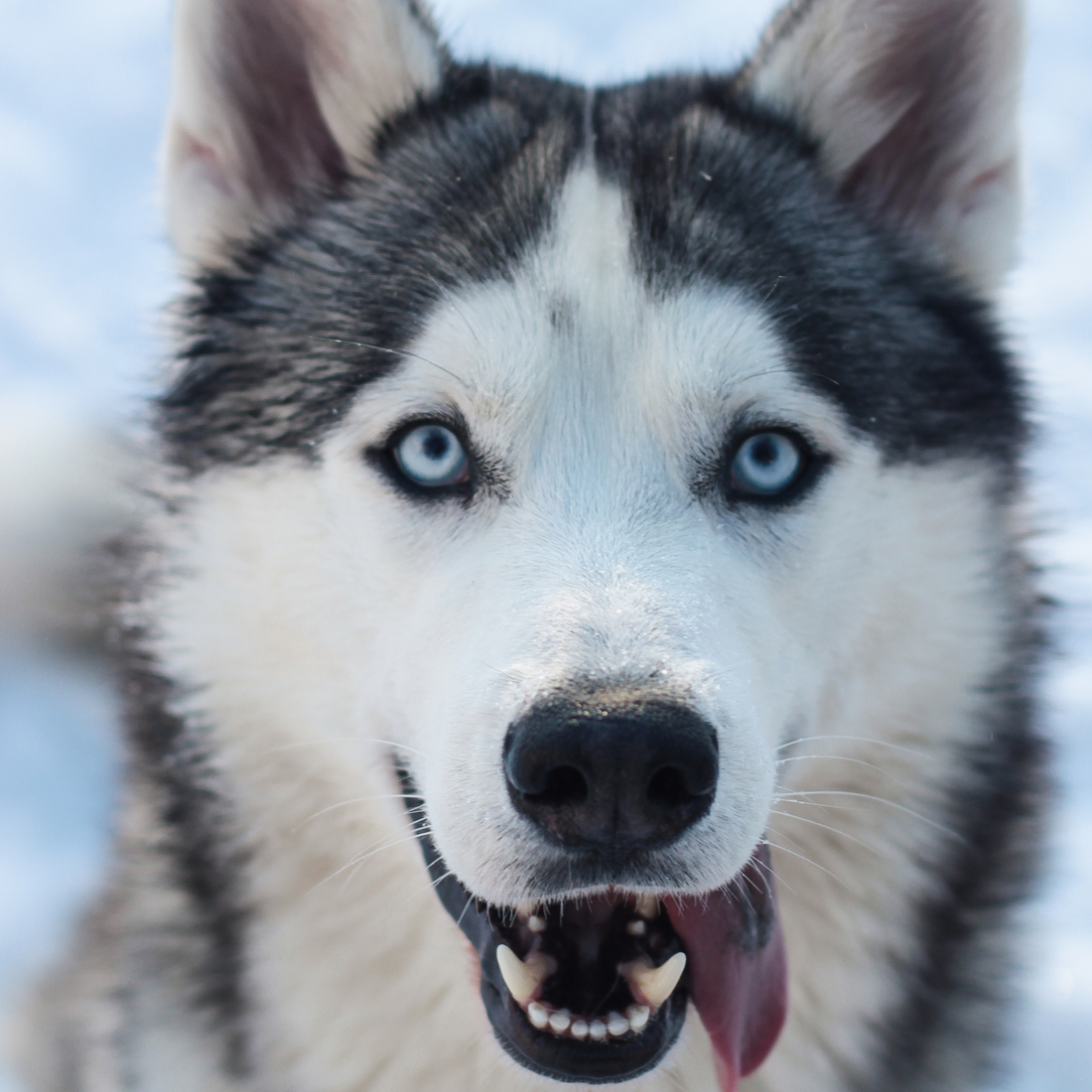
Everything You Need To Know About The Siberian Husky
Share

About the Siberian Husky
The Siberian Husky is truly a neck turner. We’re sure you’ve encountered this majestic wolf-like dog with beautiful brown, blue, or even mixed colored eyes. Slightly smaller than their Alaskan Malamute cousins, the Siberian Husky typically weighs between 35-60 pounds making them easier to manage.Bred as a compact sled dog, the thickly coated working dog works well in packs, which is why they are known to be very friend. These dogs also have a great endurance and love to pull on light loads in snow. Siberian Huskies also enjoy being part of the family and will easily get along with other dogs making them a little bit harder to become watchdogs. The Siberian Huskies are also very energetic and often lose to chase, so it is important to keep precautions when you leave them alone.
Siberian Husky Data
Temperament: Loyal, Mischievous, Outgoing
AKC Breed Popularity: Ranks 14 of 197
Height: 21-23.5 inches (male), 20-22 inches (female)
Weight: 45-60 pounds (male), 35-50 pounds (female)
Life Expectancy: 12-14 years
Group: Working Group


History
The Siberian Husky’s compact body, well-furred coat, erect ears, and thick, sickle-shaped tail immediately suggest the breed’s northern heritage. The breed’s ancestors were originally bred in northeastern Asia by the Chukchi people and were kept as companion dogs for their families as well as endurance sled dogs.
When changing climate conditions forced the semi-nomadic Chukchi to expand their hunting grounds or perish, they rose to the challenge by developing a sled dog capable of hauling light loads over vast expanses of frozen wasteland in sub-zero temperatures, with a minimum expenditure of energy. The Chukchi, isolated from the rest of the world, were able to maintain the purity of their sled teams for many generations. The dogs they developed were the direct forerunners of today’s Siberian Husky.
Siberians caught the eye of the public when they began winning sled races in the early 1900s, but they made headlines in 1925 when a legendary musher Leonhard Seppala led a relay of Siberian Huskies 658 miles in only five and a half days to rush a lifesaving serum to Nome, Alaska, where an epidemic of diphtheria had broken out. The thrilling “serum run,” reported breathlessly in newspapers around the world, won Siberians a popularity that has not abated to this day. Balto, who was Seppala’s lead dog on the final leg of the journey, remains one of the most honored hero dogs in canine history; a statue of him stands in New York City’s Central Park.Mushers still keep packs of sledding Siberians for fun and sport throughout North America. Less adventurous devotees of the breed simply enjoy the company of this sociable, gentle companion.


The Husky Diet
It is very important to feed high-quality dog food for the Siberian to maintain a healthy skin and coat. For working Siberian Huskies who pull during winter, it is recommended for them to have at least 32% protein in their diet, but only around 20% protein during summertime. Since the Philippines is more or less warm throughout the year, keep it at 20% protein works fine. Best would be to consult with your local vet to find what’s right for your Siberian Husky.Grooming
Before you send your Husky to the groomer, make sure they know what they are doing and to not shave their coat unless directed by a vet. Huskies have a double coat, which will naturally shed to adjust to temperatures.Siberian Huskies are considered a “natural” breed. They are remarkably self-cleaning and often need only a few baths a year, unless being shown in conformation dog shows. Weekly brushings help keep the coat and skin in good condition. Siberians have a double coat—an undercoat, and guard hair. The undercoat is shed twice a year, and it is important to continually “rake out” the old coat, using a pin brush and metal comb. Pay close attention to the length of the nails, and keep them trimmed to prevent any foot problems. Siberians competing in conformation require a bit more selective grooming for the best presentation."
